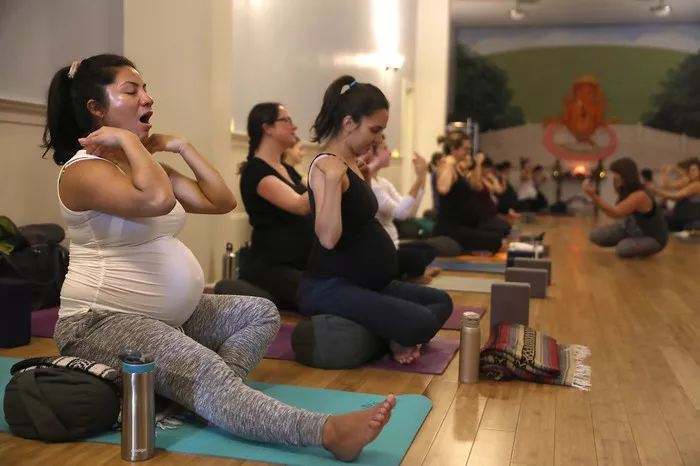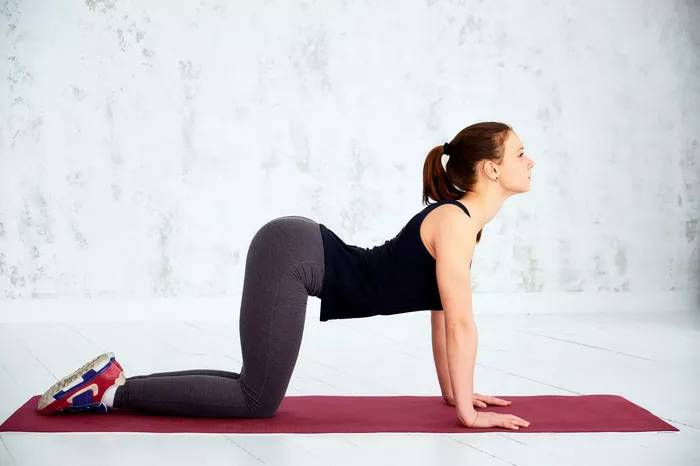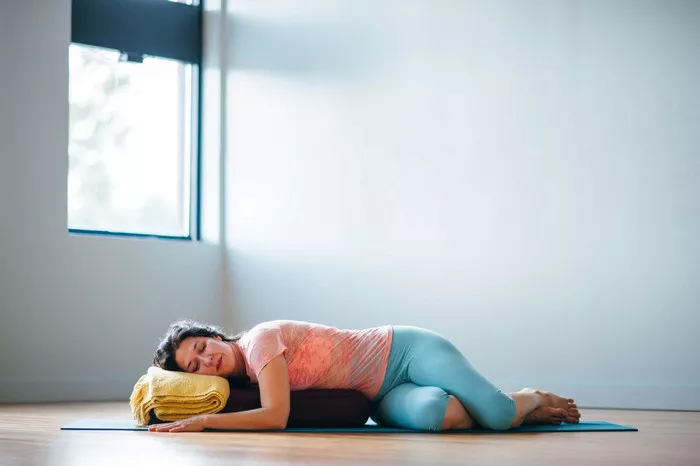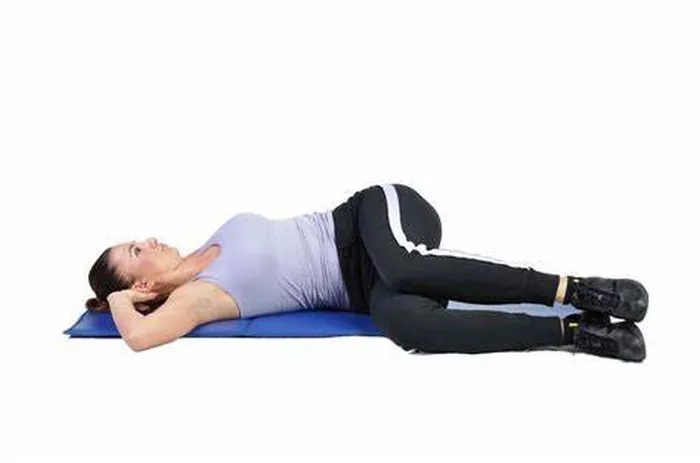Anxiety is a natural response to stress, often manifesting as excessive worry, nervousness, or fear. While short-term anxiety can be useful in certain situations, chronic anxiety can significantly impact one’s mental and physical well-being. Common symptoms include rapid heartbeat, shallow breathing, restlessness, and difficulty concentrating. Breathwork, or pranayama in yoga, is a powerful tool that can help manage and reduce these symptoms by regulating the nervous system.
Pranayama involves conscious breathing techniques that influence the body’s energy channels and mental state. By controlling the breath, individuals can shift from a state of fight-or-flight to one of rest and relaxation. Practicing pranayama consistently not only calms the mind but also enhances self-awareness and emotional balance. The following ten pranayamas are effective for alleviating anxiety.
1. Nadi Shodhana (Alternate Nostril Breathing)
Nadi Shodhana is one of the most popular pranayamas for calming the mind and balancing the nervous system. This technique involves breathing in and out through alternate nostrils, which is believed to purify the energy channels (nadis) in the body.
To practice:
- Sit in a comfortable position with your spine straight.
- Use your right thumb to close your right nostril and inhale through the left.
- Close the left nostril with your ring finger, open the right nostril, and exhale.
- Inhale through the right nostril, close it, then exhale through the left.
Repeat this cycle for 5 to 10 minutes. Nadi Shodhana reduces stress, lowers heart rate, and fosters mental clarity.
2. Bhramari (Bee Breath)
Bhramari pranayama is named after the humming sound produced during exhalation, resembling a bee. This sound vibration has a soothing effect on the brain, helping to relieve stress and anxiety almost instantly.
To practice:
- Sit in a quiet place and close your eyes.
- Inhale deeply through the nose.
- While exhaling, make a gentle humming sound like a bee.
- Keep the mouth closed and feel the vibration in your head and chest.
Bhramari can be practiced for several rounds, especially before bedtime. It is known to quiet the mind, improve sleep quality, and reduce blood pressure.
3. Anulom Vilom (Controlled Alternate Breathing)
Often confused with Nadi Shodhana, Anulom Vilom focuses more on the control and rhythm of breathing through alternate nostrils. This technique enhances oxygen intake and promotes emotional stability.
To practice:
- Close your right nostril and inhale slowly through the left.
- Close both nostrils briefly (optional), then open the right and exhale.
- Inhale through the right nostril, hold, then exhale through the left.
Practice for 5 to 15 minutes daily. Anulom Vilom promotes a balanced state of mind, helping to manage anxiety and depression over time.
4. Ujjayi (Victorious Breath)
Ujjayi breathing is characterized by a soft ocean-like sound created by slightly constricting the throat during inhalation and exhalation. It is frequently used during asana practice and meditation to maintain focus and inner calm.
To practice:
- Sit comfortably with your mouth closed.
- Inhale slowly through your nose while slightly contracting the throat.
- Exhale through the nose with the same gentle constriction.
The resulting sound resembles ocean waves or gentle snoring. Ujjayi helps release tension, enhances concentration, and induces a meditative state that can counter anxious thoughts.
5. Sheetali (Cooling Breath)
Sheetali pranayama is particularly useful for calming both the body and mind, especially during heated emotional states. It is a cooling breath technique that lowers body temperature and soothes the nervous system.
To practice:
- Sit in a comfortable posture.
- Stick your tongue out and roll the sides upward to form a tube (or keep the tongue flat if you can’t roll it).
- Inhale through the tongue tube.
- Close your mouth and exhale through the nose.
Practice for 5 to 10 minutes. Sheetali reduces anger, high blood pressure, and mental tension.
6. Sheetkari (Hissing Breath)
Similar to Sheetali, Sheetkari is another cooling pranayama technique. Instead of rolling the tongue, the teeth are gently clenched, and the breath is drawn through them. It is ideal for calming down quickly.
To practice:
- Sit comfortably and gently press your upper and lower teeth together.
- Inhale through the teeth while keeping the lips slightly parted.
- Close the mouth and exhale slowly through the nose.
Sheetkari reduces agitation and helps in achieving a state of inner peace, making it especially beneficial for those experiencing anxiety attacks.
7. Chandra Bhedana (Left Nostril Breathing)
Chandra Bhedana involves inhaling through the left nostril and exhaling through the right. This pranayama stimulates the parasympathetic nervous system and promotes relaxation.
To practice:
- Use your right hand to close the right nostril.
- Inhale slowly through the left nostril.
- Close the left nostril and exhale through the right.
Repeat for several minutes. Practicing Chandra Bhedana in the evening can help you unwind, reduce anxiety, and prepare for restful sleep.
8. Sama Vritti (Equal Breathing)
Sama Vritti is a simple yet powerful technique where the inhalation and exhalation are of equal length. This rhythmic breathing fosters mental stability and emotional balance.
To practice:
- Inhale slowly to a count of four.
- Exhale slowly to the same count.
- Gradually increase to six or eight counts as you become more comfortable.
This practice can be done anywhere, anytime, and is especially effective in stressful situations. Sama Vritti calms the nervous system and improves focus.
9. Dirgha (Three-Part Breath)
Dirgha pranayama involves deep breathing into the abdomen, rib cage, and upper chest, promoting full oxygen exchange and grounding the mind.
To practice:
- Lie down or sit in a relaxed position.
- Inhale deeply into your belly, then expand the rib cage, and finally the upper chest.
- Exhale slowly in reverse order.
Repeat this for 5 to 10 minutes. Dirgha breathing helps regulate emotions, increases lung capacity, and provides a profound sense of calm.
10. Kapalabhati (Skull Shining Breath)
Kapalabhati is an energizing technique involving forceful exhalations and passive inhalations. Though stimulating, it can help eliminate anxiety by improving focus and clearing mental fog.
To practice:
- Sit upright and take a deep breath in.
- Exhale forcefully through the nose by contracting the abdominal muscles.
- Let the inhalation happen passively.
Start with 30 to 50 strokes and gradually increase. Kapalabhati is best practiced in the morning and under the guidance of a yoga instructor, especially for those with anxiety.
Tips for Practicing Pranayama Safely and Effectively
- Practice on an empty stomach: Perform pranayama at least 2-3 hours after eating for maximum benefits.
- Sit in a comfortable position: Maintain a straight spine and relaxed shoulders.
- Focus on your breath: Stay mindful throughout the practice to enhance its calming effects.
- Avoid overexertion: If you feel dizzy or lightheaded, pause and return to normal breathing.
- Consistency matters: Daily practice yields the best results over time.
Integrating Pranayama into Your Daily Routine
Incorporating pranayama into your daily routine doesn’t require a lot of time. Even 10 to 20 minutes in the morning or before bed can make a significant difference in your anxiety levels. Combining pranayama with gentle yoga asanas and meditation can further enhance its calming effects. Create a quiet space, set a regular time, and use guided sessions if needed to build your practice.
Over time, you may notice improved emotional resilience, better sleep, and a more peaceful outlook. Pranayama is not just a temporary fix but a long-term strategy for managing anxiety and cultivating inner balance.
Conclusion
Anxiety can be overwhelming, but tools like pranayama offer natural, accessible, and effective relief. The ten techniques outlined above are among the most trusted and time-tested practices in yoga for calming the mind and soothing the nervous system. By dedicating a few minutes each day to conscious breathing, you can take a proactive step toward emotional well-being and mental clarity. Whether you are new to yoga or an experienced practitioner, pranayama can be a powerful ally in your journey to a calmer, healthier life.
Related Topics:





















